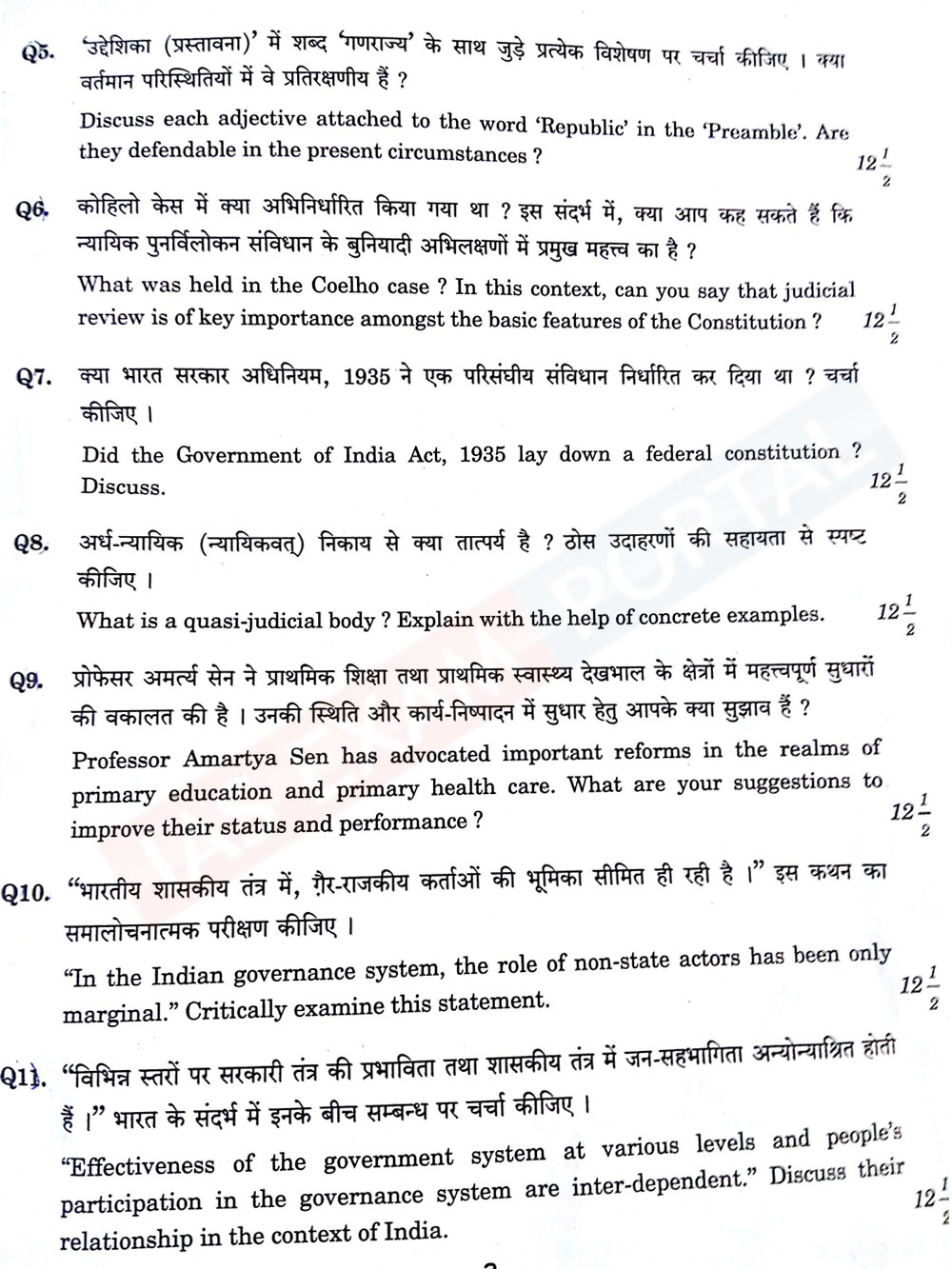(HOT) UPSC Current Affairs 2025 PDF
NEW! The Gist (NOV-2025) | E-BOOKS
(Download) UPSC IAS Mains General Studies (Paper-2) Exam Paper - 2016

(Download) UPSC IAS Mains General Studies (Paper-2) Exam Paper - 2016
Exam Name: UPSC IAS Mains General Studies (Paper-2)
Year: 2016
Exam Date: 5-12-2016
File Type: PDF
- Discuss the essentials of the 69th Constitutional Amendment Act and anomalies, if any, that have led to recent reported conflicts between the elected representatives and the institution of the Lieutenant Governor in the administration of Delhi. Do you think that this will give rise to a new trend in the functioning of the Indian federal politics?
- To what extent is Article 370 of the Indian Constitution, bearing marginal note “temporary provision with respect to the State of Jammu and Kashmir”, temporary? Discuss the future prospects of this provision in the context of Indian polity.
- “The Indian party system is passing through a phase of transition which looks to be full of contradictions and paradoxes.” Discuss.
- Exercise of CAG’s powers in relation to the accounts of the Union and the States is derived from Article 149 of the Indian Constitution. Discuss whether audit of the Government’s policy implementation could amount to overstepping its own (CAG) jurisdiction.
- Discuss each adjective attached to the word ‘Republic’ in the ‘Preamble’. Are they defendable in the present circumstances?
- What was held in the Coelho case? In this context, can you say that judicial review is of key importance amongst the basic features of the Constitution?
- Did the Government of India Act, 1935 lay down a federal constitution? Discuss.
- What is quasi judicial body? Explain with the help of concrete examples.
- Professor Amartya Sen has advocated important reforms in the realms of primary education and primary health care. What are your suggestions to improve their status and performance?
- “In the Indian governance system, the role of non-state actors has been only marginal.” Critically examine this statement.
- “Effectiveness of the government system at various levels and people’s participation in the governance system are inter-dependent/” Discuss their relationship in the context of India.
- In the integrity index of Transparency International, India stands very low. Discuss briefly the legal, political, social and cultural factors that have caused the decline of public morality in India.
- Has the Indian governmental system responded adequately to the demands of Liberalization, Privatization and Globalization started in 1991? What can the government do to be responsive to this important change?
- “Traditional bureaucratic structure and culture have hampered the process of socio-economic development in India.” Comment.
- Examine the main provisions of the National Child Policy and throw light on the status of its implementation.
- “Demographic Dividend in India will remain only theoretical unless our manpower becomes more educated, aware, skilled and creative.” What measures have been taken by the government to enhance the capacity of our population to be more productive and employable?
- “The broader aims and objectives of WTO are to manage and promote international trade in the era of globalization. But the Doha round of negotiations seem doomed due to differences between the developed and the developing countries.” Discuss in the Indian perspective.
- Evaluate the economic and strategic dimensions of India’s Look East Policy in the context of the post Cold War international scenario.
- “Increasing cross-border terrorist attacks in India and growing interference in the internal affairs of member-states by Pakistan are not conducive for the future of SAARC (South Asian Association for Regional Cooperation).” Explain with suitable examples.
- What are the aims and objectives of the McBride Commission of the UNESCO? What is India’s position on these?






